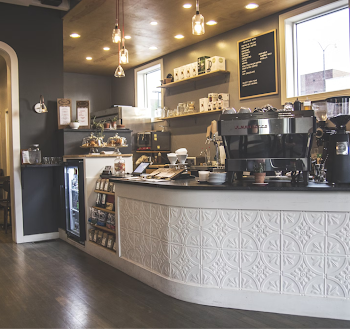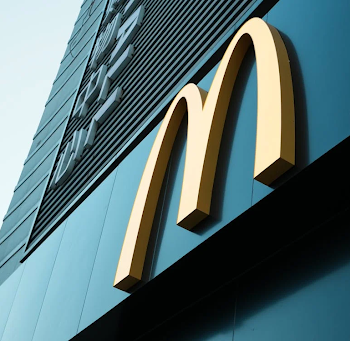Creating a memorable experience at your restaurant is key to building a loyal customer base and encouraging repeat visits. With the competitive nature of the food and hospitality industry, it’s not just about serving great food; it’s about creating an experience that lingers in your customers’ minds long after they’ve left. From branding to air quality and the quality of your menus, several factors can significantly influence how your restaurant is remembered. This article explores practical strategies to ensure your customers never forget their dining experience at your establishment.
Branding: Making a Lasting Impression
Effective branding is essential for any restaurant looking to make a lasting impression on its customers. Your brand is more than just your logo; it’s the overall identity of your restaurant, which includes everything from the decor and ambiance to the small details that customers interact with.
Leveraging Branding Through Custom Items
- Custom Coasters: One of the simplest yet most effective ways to reinforce your brand is by incorporating it into everyday items such as custom coasters. Every time a customer lifts their drink, they are subtly reminded of your restaurant’s name, logo, and theme. These small but significant details can help cement your brand in their memory.
- Branded Napkins and Utensils: Just like coasters, branded napkins, utensils, and even plates can leave a lasting impression. These items are used multiple times during a meal, providing constant reinforcement of your brand.
- Merchandise: Offering branded merchandise such as t-shirts, mugs, or tote bags can further enhance your restaurant’s visibility and keep your brand top of mind for customers even after they’ve left.
- Digital Presence: Ensure that your branding is consistent across all digital platforms, including your website, social media, and email communications. Consistency helps create a cohesive brand identity that customers can easily recognize and remember.
Examples of Branding Opportunities
| Branding Element | Example | Impact |
| Custom Coasters | Coasters with the restaurant’s logo and contact details | Reinforces brand identity during the dining experience |
| Branded Napkins | Napkins featuring the restaurant’s logo or slogan | Subtle but constant reminder of the brand |
| Merchandise | T-shirts, mugs, or tote bags with the restaurant’s name | Extends brand presence beyond the restaurant |
| Digital Branding | Consistent use of logo and colors on social media | Strengthens brand recognition across platforms |
According to Forbes, consistent branding across all platforms can increase revenue by up to 23%, highlighting the importance of integrating your brand into every aspect of the customer experience.
Creating a Memorable Ambiance: The Role of Lighting and Music
Another critical aspect of creating a memorable dining experience is the ambiance, which is largely influenced by lighting and music. The right ambiance can enhance the overall mood of your restaurant, making it more inviting and enjoyable for your customers.
The Impact of Lighting and Music
- Lighting: The lighting in your restaurant sets the tone for the dining experience. Soft, warm lighting can create a cozy, intimate atmosphere that encourages relaxation and conversation, while brighter lighting might be more suitable for casual, family-friendly settings. Consider using adjustable lighting to match the time of day and the type of experience you want to offer.
- Music: Background music adds another layer to the dining experience. The type of music you choose should reflect your restaurant’s theme and clientele. For example, a fine dining restaurant might play soft jazz or classical music, while a trendy bistro might opt for more upbeat, contemporary tracks. The key is to keep the music at a level that enhances the atmosphere without overwhelming the conversation.
Enhancing the Customer Experience Through Ambiance
- Consistency: Ensure that the ambiance aligns with your restaurant’s branding and overall theme. Consistent ambiance creates a cohesive experience that customers will associate with your restaurant.
- Mood Enhancement: The right combination of lighting and music can elevate the mood, making the dining experience more enjoyable and memorable.
According to Restaurant Business Magazine, 74% of customers believe that the ambiance of a restaurant significantly impacts their overall dining experience, making it a crucial factor in how they remember their visit.
Ensuring Good Air Quality: Comfort and Health Matter
Good air quality is often overlooked in the dining experience, yet it plays a crucial role in ensuring customer comfort and satisfaction. Poor air quality can negatively impact a customer’s experience, making them less likely to return.
Importance of Air Quality in Restaurants
- Comfortable Dining Experience: Ensuring your restaurant has clean, fresh air makes the dining experience more comfortable. Stale air, strong odors, or an overly humid environment can detract from the enjoyment of a meal.
- Health and Safety: Maintaining good air quality is also a matter of health and safety. Proper ventilation reduces the risk of airborne contaminants and allergens, creating a healthier environment for both customers and staff.
- Odor Control: Good air quality helps control food odors, ensuring that your restaurant smells inviting rather than overpowering. This is especially important in open kitchens or restaurants with a variety of strong-smelling dishes.
- Positive Atmosphere: The overall ambiance of your restaurant is influenced by air quality. Fresh, clean air contributes to a positive atmosphere, making the space more inviting and enjoyable.
Strategies for Maintaining Good Air Quality
- Ventilation Systems: Invest in a high-quality ventilation system that circulates fresh air and filters out contaminants.
- Air Purifiers: Consider using air purifiers to remove pollutants, allergens, and odors from the air. This is especially useful in restaurants located in busy urban areas.
- Regular Maintenance: Ensure that HVAC systems are regularly maintained and cleaned to prevent the buildup of dust, mold, and other contaminants.
- Use of Plants: Incorporating indoor plants can naturally improve air quality by absorbing carbon dioxide and releasing oxygen, while also adding to the aesthetic of the space.
- Smoke and Vape detection: You can stop people smoking or vaping using a detector, to ensure good air for all.
The Environmental Protection Agency (EPA) states that indoor air quality can be two to five times worse than outdoor air, making it essential for restaurants to prioritize proper ventilation and air purification.
Interactive Elements: Engaging Customers Beyond the Meal
Incorporating interactive elements into your restaurant experience can also help ensure that your establishment remains top-of-mind for customers. These elements can provide unique and engaging experiences that set your restaurant apart from others.
Ideas for Interactive Elements
- Tabletop Entertainment: Offer interactive experiences at the table, such as digital tablets with games, trivia related to your restaurant, or even a way to customize orders. This keeps customers engaged while they wait for their meals and adds an element of fun to their visit.
- Chef’s Table or Open Kitchen: Consider offering a chef’s table experience or an open kitchen where customers can see the chefs in action. This not only entertains guests but also builds a connection between the kitchen and the dining area, making the experience more personal.
- Customer Feedback and Social Media: Encourage customers to share their experiences on social media by offering incentives, such as a discount on their next visit, for tagging your restaurant in their posts. This not only engages customers but also spreads word-of-mouth digitally.
Benefits of Interactive Elements
- Increased Engagement: Interactive elements keep customers entertained and involved, making their dining experience more memorable.
- Enhanced Customer Loyalty: Offering unique experiences that go beyond just food can foster a deeper connection with your customers, encouraging them to return.
- Word-of-Mouth Marketing: Engaged customers are more likely to talk about and recommend your restaurant, driving new business.
According to NRA (National Restaurant Association), restaurants that incorporate interactive elements and unique dining experiences see a 20% increase in customer retention and satisfaction, highlighting the importance of engaging your customers in creative ways.
High-Quality Menus: The Power of Presentation
A restaurant’s menu is often the first point of contact between the customer and the dining experience. A well-designed, high-quality menu not only informs but also entices customers, setting the tone for their entire visit.
Designing Menus That Make an Impact
- Use of High-Quality Materials: Consider using premium materials for your menus, such as leather-bound covers, textured paper, or even creating a photo book-style menu. A menu that feels substantial and looks visually appealing can elevate the dining experience and set your restaurant apart from the competition.
- Visual Appeal: Incorporate high-quality images of your dishes within the menu. A photo book format allows for larger, more detailed images that can make the food appear more appetizing. This visual stimulation can influence customer choices and increase satisfaction.
- Clear and Concise Descriptions: While visuals are important, the descriptions of your dishes should not be overlooked. Ensure that each menu item is accompanied by a clear, concise, and enticing description that highlights key ingredients and flavors.
- Menu Layout: The layout of the menu should be easy to navigate, with a logical flow that guides customers through the different sections. Highlighting signature dishes or seasonal specials can draw attention to high-profit items.
Benefits of High-Quality Menus
- Customer Engagement: A beautifully designed menu engages customers from the moment they sit down, increasing their anticipation for the meal.
- Perceived Value: High-quality materials and presentation can elevate the perceived value of your dishes, justifying premium pricing.
- Memorability: A unique menu design, such as a photo book, can make a lasting impression, making customers more likely to remember their experience and return.
According to Restaurant Business Online, 79% of diners say that the quality of a restaurant’s menu design impacts their overall dining experience, making it a critical element in creating a memorable visit.
Exceptional Service: The Heart of the Dining Experience
While branding, air quality, and menus play significant roles, exceptional service is at the heart of what makes a dining experience unforgettable. The way customers are treated by the staff can make or break their perception of your restaurant.
Key Elements of Exceptional Service
- Attentiveness: Train your staff to be attentive without being intrusive. This means being available to assist customers when needed but also allowing them to enjoy their meal without feeling rushed.
- Personalization: Encourage your staff to personalize the dining experience whenever possible. Remembering a regular customer’s favorite dish or offering recommendations based on their preferences can go a long way in building loyalty.
- Professionalism: Ensure that your staff is well-trained in the basics of service, including proper etiquette, knowledge of the menu, and handling special requests or issues with professionalism and grace.
- Consistency: Delivering consistent service is key to maintaining a positive reputation. Whether a customer is visiting for the first time or is a regular, they should receive the same high level of service each time.
Impact of Exceptional Service
- Customer Loyalty: Exceptional service is a significant driver of customer loyalty. A positive interaction with staff can turn a one-time visitor into a repeat customer.
- Word of Mouth: Customers who receive outstanding service are more likely to recommend your restaurant to others, increasing your customer base through word-of-mouth marketing.
- Overall Experience: Service is often the most memorable part of a dining experience. Even if the food and ambiance are excellent, poor service can overshadow these positives.
Zagat Survey reports that 61% of diners say that service is the most important factor in deciding whether to return to a restaurant, underscoring the importance of investing in staff training and customer service.
Conclusion
Creating a memorable dining experience goes beyond just serving great food. By focusing on branding, ensuring good air quality, investing in high-quality menus, and delivering exceptional service, you can create an environment that leaves a lasting impression on your customers. These elements work together to make your restaurant stand out, encouraging repeat visits and positive word-of-mouth. In a competitive industry, the details matter, and by paying attention to these aspects, you can ensure that your customers not only enjoy their meal but also remember their experience long after they’ve left your restaurant.



